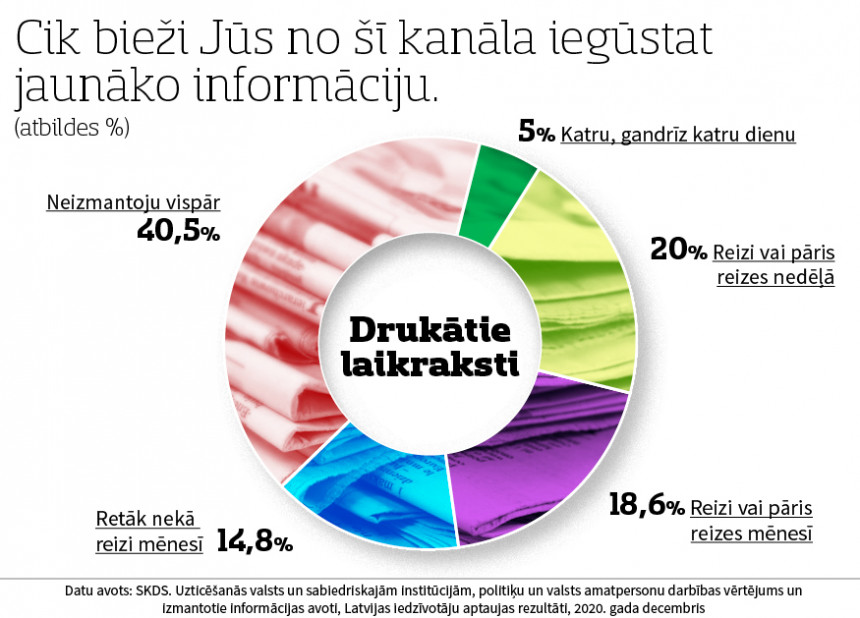The majority of Latvians hardly read printed newspapers at all

During last year, the habits of Latvian readers continued to change, increasingly abandoning traditional mass media in favor of Internet publications and social networks. It is likely that the Covid-19 pandemic was one of the main factors for crossing an important line last year. Already 55.3% of all surveyed readers who use the Latvian language on a daily basis read printed newspapers less than once a month or do not read them at all. This is evidenced by the results of the most recent survey (1008 respondents) of the research center SKDS (Trust in state and public institutions, evaluation of the activities of politicians and public officials and sources of information used, results of the Latvian population survey, December 2020).
In December 2020, only 5% of Latvian readers read printed newspapers every day, but 20% read them once or twice a week. These are just the facts that explain why last year Neatkarīgā made the significant shift from paper format to fully digital.
The transition from paper format is not only a Latvian trend. Similar processes are taking place more or less rapidly in the EU and in other parts of the world.
On November 26, 2020, I was able to share Neatkarīgā's experience of digital transition at the 2020 Belt and Road Journalists Forum. I had the opportunity to address the leaders of 105 journalists' unions from Latin America, Asia, Oceania, Africa, and Europe. Last week, a report on the process of changing the type of media was published by the All-China Journalists Association (Development of China's News Media (Released in 2020)). China, the world's largest country by population, is also making the transition from paper to digital platforms. In March 2020, 904 million users had an Internet connection in China, which is 75.1 million more than at the end of 2018 (page 12 of the report). The consequence of the expansion of Internet access is a decrease in the production of the printed press. In 2019, compared to 2018, the number of newspapers in China decreased by 1%, the total circulation of newspapers decreased by 5.8%, and the total number of pages of all newspaper numbers decreased by 14% (p. 14). The increasing availability of the Internet is inevitably leading to both a decrease in the number of publications and a decrease in their circulation, and newspapers, in general, are becoming thinner and thinner. Similar processes are taking place in all technologically advanced countries, but the restrictions imposed during the Covid-19 pandemic in 2020 significantly exacerbated this trend. In many places, the ban on leaving home was implemented, which significantly reduced the sales of newspapers and magazines and encouraged a change in reading habits in favor of reading on the Internet.
Change of readers' habits is an unstoppable process, so the biggest challenge for a quality press is to fit into the digital format without losing quality and without succumbing to market-driven pressure to create content based solely on the largest number of views.